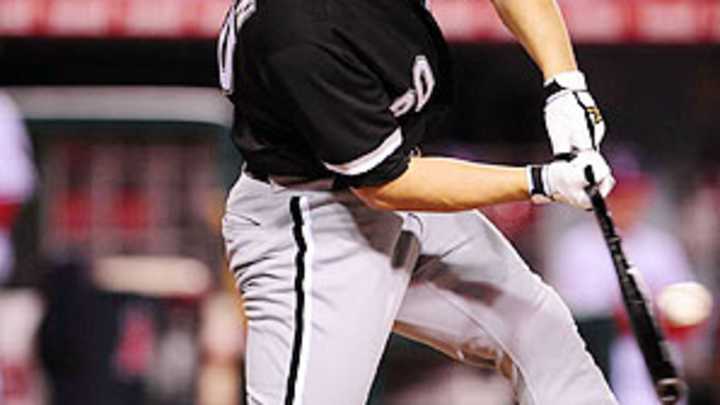Scouting Report: Carlos Quentin


Latest in a series of weekly scouting reports provided to SI.com by the network of former scouts, players, coaches and executives at the Baseline Group. See below for past reports.
• Team: Chicago White Sox
• Position: Outfielder
• DOB: 08/28/1982
• Height/Weight: 6'1"/225lb
• Bats/Throws: Right/Right
• Body Type: Strong body, durable XL frame
Scale:
• Elite: top player at his position (Alex Rodriguez)
• Premium: top five at his position (Wade Boggs)
• Good: top 10 at his position; occasional All-Star
• Average: everyday position player
• Key role: part-time or platoon player
• QuentinCurrent: Average
• QuentinProjected: Average/Good
After two years of disappointment in Arizona, 25-year-old White Sox outfielder Carlos Quentin would appear to be realizing the potential he showed in the minors -- where he produced a line of .313/.413/.527 in 379 games. In 240 at bats with the White Sox, Quentin has a line of .267/.376/.521 and is among the league leader in several categories:
• 8th in runs (44)
• 4th in home runs (16)
• 2nd in RBIs (55)
• 10th in slugging (.521)
• 10th in Adjusted OPS+ (141)
Quentin has the physical tools to be an everyday player at the Major League level and is finally showing he can use them effectively. He plays hard every day. He has above average power and fits the role of a right fielder or left fielder on a championship club. He had off-season surgery on his left shoulder to repair a torn labrum and torn rotator cuff, and it looks like it made a significant difference in his production.
Quentin's consistent production at the plate has been a big reason why the White Sox are atop the American League Central standings, despite the woes of Paul Konerko (.215 batting average), Juan Uribe (.198), Nick Swisher (.229) and Jim Thome (.221). Quentin has taken an aggressive approach to hitting by driving balls to all parts of the field. He started the year batting seventh in the line-up and is now batting third. Quentin is hitting the ball down in the zone well and is capable of driving it out of the park from left field to right field.
But while Quentin is having a very good year, he projects to topping out as just an average to possibly good player. Because he wasn't well known in the American League to start of the season, Quentin gotten some good pitches to hit -- or at least better than what he would have seen in the National League. The more exposure American League pitchers and scouts get to Quentin, the more they'll identify his strengths and weaknesses, and they'll adjust their attack plan accordingly. Quentin's production will slow down, and looking at his monthly splits, we see this trend already occurring:
Long term, Quentin projects to be somewhere around the level of Twins outfielders Jason Kubel and Michael Cuddyer. If he continues to improve, he could max out at around Trot Nixon's peak.
• Plus power (25+ HR)
• Strong arm
• "Gamer-type" attitude and approach
• Poise and maturity to hit in the middle of the lineup
• Can get on-base even when not hitting (high walk rate and gets hit by a lot of pitches)
• Streaky hitter
• Tends to chase pitches out of the strike zone
• Arm accuracy is below average
The key to subduing Quentin is to use fastballs over 90mph above the belt in combination with breaking pitches on the outer half of the plate. Quentin starts from a crouched position and many times raises up his head and upper body to hit the high pitch. This move creates a long swing and as a result he doesn't drive it as much.
Another good way for to attack Quentin, especially for left-handers, is with a good change-up. When a pitcher pitches to contact, the goal is to make sure the batter doesn't get good or "square" contact. A good change-up will be effective at keeping Quentin off balance and unable to make square contact because his stance has him so spread out.
The place not to pitch Quentin is down in the strike zone. The low center of gravity within his very crouched stance provides quickness from his strong legs and the ability to drive the low ball. Because he's in that crouch, Quentin moves his body less versus low pitches and as a result recognizes more pitches and shifts his weight easier.
Quentin is an aggressive hitter. He stands close to the plate with an open stance. He is crouched with his legs spread out, so he needs just a short stride to get square to pitch. Quentin's setup allows him to stay balanced and follow through with his swing more consistently against low pitches. Quentin's stance, which he changed this year, also limits his head movements, and this allows him to recognize more pitches and be better able to make contact against strikes of various types.
• Greg Maddux
• Lance Berkman
• Micah Owings
• Chipper Jones
